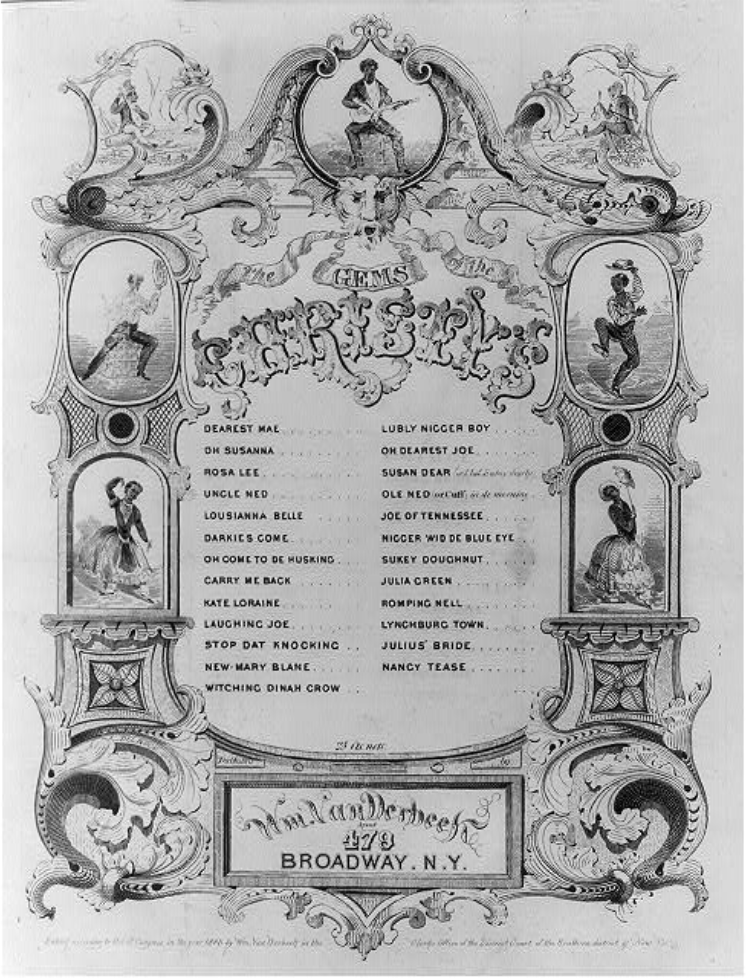The tune “Angeline the Baker” has woven itself into the fabric of American musical heritage, transcending its 19th-century origins to become a beloved standard in old-time and bluegrass circles.
The Origin of “Angeline the Baker”
The story of “Angeline the Baker” begins with Stephen Foster (1826-1864), a prominent American songwriter. Foster wrote many popular songs that became a part of American folk music including “Oh, Susanna” and “De Camptown Races.” “Angeline the Baker,” composed in 1850, was originally called “Angelina Baker.” It was crafted for Christy’s Minstrels, a popular blackface minstrel troupe of the time.

Minstrel shows, which featured white performers in blackface presenting caricatured versions of African American music and culture, were a significant part of the entertainment landscape in the mid-19th century. “Angelina Baker” fit this mold, with its lyrics reflecting the minstrel tradition. The original song tells the story of a plantation slave who is mourning for Angelina Baker who has “gone away” (presumably sold), providing a stark reminder of the song’s origins.
Evolution into a Fiddle Tune
Over time, “Angelina Baker” underwent a transformation from a vocal piece into an instrumental fiddle tune that found favor among fiddlers and string bands. This evolution was part of a broader trend in American music, where many songs from the minstrel tradition were adapted and adopted into other musical forms.
As “Angelina Baker” evolved, it also underwent a slight name change, becoming widely known as “Angeline the Baker.” This name is the one most commonly used in old-time and bluegrass music today.
At some point in it’s history new lyrics evolved that erased the references to slavery. In modern versions, little remains of the original words, though a continued theme is tall Angelina being sought after by a beau.
VERSE
Angeline the baker lives on a village green,
The way I always loved her beats all you ever seen.
CHORUS
Angeline the baker, her age is forty-three,
Fed her sugar candy, and she won’t marry me.
OTHER VERSES
Her father is the miller, they call him Uncle Sam.
I never will forget her, unless I take a dram.
Angeline is handsome, Angeline is tall,
They say she sprained her ankle a-dancing at the ball.
She can’t do hard work because she is not stout,
She bakes her biscuits every day, and pours the coffee out.
I’ll never marry no other girl, no matter where I go.
I said I’d marry Angeline just twenty years ago.
The last time I saw her was at the county fair.
Her father run me almost home and told me to stay there.
Modern Popularity
Today, “Angeline the Baker” remains a favorite in jam sessions, and it is often one of the first tunes learned by new fiddle players. The tune has been recorded by numerous artists and bands in the old-time, bluegrass, and folk music scenes, each bringing their own unique interpretation to the melody.
Despite its origins in a minstrel song, “Angeline the Baker” has transcended its initial context to become an enduring piece of American folk music. The tune’s journey from a 19th-century minstrel show to modern fiddle competitions is a testament to the dynamic and evolving nature of folk music.
The enduring popularity of “Angeline the Baker” highlights the way music can bridge cultural and temporal divides. While it is important to acknowledge and understand the complex and often troubling history of its origins, the tune itself has become a beloved part of America’s musical landscape. It serves as a reminder of the power of music to adapt, evolve, and bring people together across generations.
Recordings
YouTube, Liz Faiella on fiddle
YouTube, Molly Tuttle on guitar, chatting about the tune and Drop D tuning
Other Resources
Library of Congress, Guide to Resources on Stephen Collins Foster
Library of Congress, Angelina Baker Lyrics
